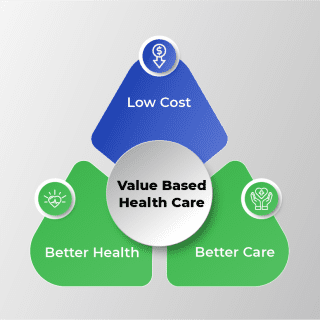

In an era of digitalization, healthcare providers need to know how to leverage technology in order to improve patient care. This is especially true for cancer care, where remote patient monitoring (RPM) apps can play a vital role.
In this article, we will discuss how to implement an RPM program for cancer care.
Telehealth in treating cancer
Remote patient monitoring (RPM) is a technology that allows patients to receive treatment from a doctor or nurse at home, using technology such as video conference, internet and telephone.
There are a number of different types of remote patient monitoring technologies available today. Some of the most popular include:
Telehealth:
Telehealth is a type of remote patient monitoring that uses traditional methods such as phone or email communication. Telehealth allows physicians to access patient data from any device with internet access.
Mobile apps:
Mobile apps are a popular form of remote patient monitoring because they allow doctors to monitor patients anywhere with an internet connection. Remote Patient monitoring apps features physicians to view and manage patient data from their smartphones or tablets.
Wearable technology: Wearable technology, such as smartwatches and fitness trackers, is becoming increasingly popular in cancer care. Wearable technology allows physicians to access patient data from a variety of locations, including during treatment.
Incorporating Remote Patient Monitoring into Cancer Care
Technology has made a significant impact on the way we live and work, and the same can be said for cancer care. Medical technology advancements have allowed doctors to diagnose and treat cancer more effectively than ever before.
However, just because technology has progressed doesn’t mean that patients’ privacy should be compromised. In fact, incorporating remote patient monitoring into cancer care can help protect patients’ privacy while still providing the necessary medical information to doctors.
Essential components to consider when implementing a Remote Patient Monitoring program for cancer care
Remote Patient Monitoring apps are an effective way to improve care for cancer patients. However, implementing a PM program can be challenging.
Here are some essential components to consider when designing and implementing a PM program for cancer patients,
There are many different monitoring platforms available, and it is important to choose one that meets your needs and those of your patients. Some popular options include wearable devices such as waistband monitors or watches, implantable devices such as glucose monitors, and home monitoring systems. It is important to select a platform that is comfortable for patients and easy to use.
Patient selection
Patients who may be candidates for RPM include those with cancer, heart disease, diabetes, and other chronic diseases.
There are several factors to consider when selecting patients for RPM. The following are two considerations that should be taken into account when choosing patients for RPM:
1) Patient’s level of comfort – Patients should feel comfortable having their health information monitored electronically. If the patient is uncomfortable with the prospect of having their health information monitored electronically, then they may not be a good candidate for RPM.
2) Patient’s level of Internet access – Most patients will have basic Internet access at home. If the patient does not have Internet access at home, then they may not be able to participate in RPM.
Staffing model
When implementing a remote patient monitoring program for cancer care, it is important to consider the staffing model.
There are a few different staffing models that can be used for this type of program. One model is a nurse-managed model, in which a nurse is responsible for all patient care activities.
Another model is a physician-led model, in which the physician is responsible for all patient care activities. It is important to choose the right staffing model for your program based on the needs of your patients and your facility.
In either model, it is important to ensure that there is a designated nurse or physician responsible for monitoring and managing the patient’s health data.
Remote patient monitoring (RPM) is a type of telehealth technology that allows healthcare professionals to monitor patients remotely, usually through dedicated applications on smartphones and computers.
Remote Patient monitoring app features detecting early signs or symptoms of illness or injury, monitoring treatment regimens, and tracking the health of patients over time.
How to get started with Remote Patient Monitoring?
Remote Patient Monitoring (RPM) is a widely adopted technology in cancer care to improve patient outcomes and comfort.
Remote Patient monitoring apps can be used to track a variety of health indicators, including vital signs and symptoms, sleep quality, nutrition, hydration status, and more.
Remote patient monitoring (RPM) enables caregivers to take care of their patients from a distance, providing peace of mind for both the patient and the caregiver.
Some benefits of using RPM for cancer care include:
1. Greater peace of mind for caregivers. With Remote Patient monitoring apps, caregivers can stay connected with their patients even if they are away from the hospital. This can reduce anxiety and stress levels for both the caregiver and the patient.
2. Increased efficiency for cancer treatment. Caregivers can more easily track their patient’s treatment progress by monitoring vital signs and symptoms remotely. This allows them to make informed choices about how best to care for their patients.
3. Improved communication between caregivers and doctors. By transmitting data through a secure network, RPM allows doctors to receive real-time updates about a patient’s health status. This helps ensure accurate diagnosis and treatment decisions are made quickly.
The benefits of remote patient monitoring for cancer care are clear: improved patient safety, more efficient treatment, and decreased costs.
By implementing a remote patient monitoring program, you can ensure that your patients receive the best possible care while they’re away from the hospital.
Judah Coody is the Marketing Director at Health Wealth Safe. He is a marketing graduate from Louisiana Tech University. Judah is experienced in project management and marketing analytics tools.
View all postsBecome a Partner
Support
Portals
For additional support: call +1 (877) 581-8810.